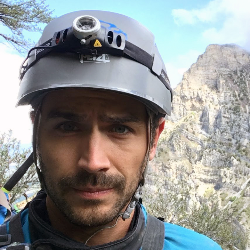Evaluating the temporal range of 230Th/U burial dating of ostrich eggshell, a new chronometer for Pleistocene terrestrial strata
 Authors:
Authors:
Elizabeth M Niespolo, Warren D Sharp, Christian A Tryon, Nicholas Fylstra, Simon James Armitage, Graham Avery, J Tyler Faith, Christopher Henshilwood, Richard Klein, Jason E Lewis, Alex Mackay, Kathryn L Ranhorn, Teresa Steele, Karen Van Niekerk, Giday W WoldeGabriel
Abstract:
Many Middle-Late Pleistocene paleoanthropological sites beyond the ~50 ka 14C limit remain poorly constrained in age or undated. Yet, they host key evidence about human evolution, including the earliest occurrences of H. sapiens, the development of modern human behaviors (defined by the Middle Stone Age in Africa and the Middle Paleolithic in the Near East >300 - 30 ka), and the expansion of H. sapiens out of Africa. Such sites commonly host ostrich eggshell (OES). 230Th/U burial dating of OES is a novel approach that explicitly recognizes that U in OES is acquired from soil pore water and that OES yield accurate 230Th/U ages when corrected for prolonged U uptake (Sharp et al., 2019; Quaternary Science Reviews, 219: 263-276). Internal reliability criteria make 230Th/U burial dating of OES a promising new technique for precisely dating Middle to Late Pleistocene paleoanthropological sequences beyond the 14C limit. Unlike techniques that require in situ radiation measurements, 230Th/U dating may be applied to archival samples. Laser ablation profiles across eggshells from > 10 sub-Saharan archaeological sites demonstrate similar patterns of secondary U in most samples consistent with early U uptake mediated by eggshell structure. 232Th/U profiles allow screening to avoid detritus-rich samples with high common Th. Dated sub-samples from precise positions in the same OES fragment that have ages consistent with single-stage diffusive U uptake at the eggshell's outer surface are suitable for determining a 230Th/U burial age. We show that 230Th/U burial ages near and beyond the 14C limit on suitable OES preserve stratigraphic order and agree with independent dates (OSL, 40Ar/39Ar, U-Th on conventional carbonates). An example of the potential of the technique is shown at Ysterfontein 1, a Middle Stone Age shell midden in South Africa, where 230Th/U burial ages indicate it is among the oldest, most precisely dated shell middens known on Earth.
This publication can be viewed here
